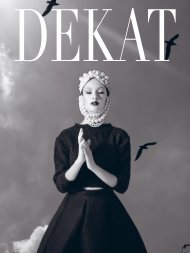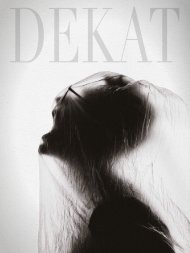1
You also want an ePaper? Increase the reach of your titles
YUMPU automatically turns print PDFs into web optimized ePapers that Google loves.
RELIGION AND SPIRITUALITY<br />
In a letter to Imrie Ross, Erika Cloete, wife of the dominee in Nieu-Bethesda, wrote that Helen told her husband<br />
that she was not an atheist but had no need for formal religion. Cloete also wrote that Helen did not attend<br />
church services. Helen grew up in a strict Calvinist home where household devotions were a daily ritual.<br />
The Camdeboo area, which includes Graaff-Reinet and Nieu-Bethesda, was settled by frontiersmen and in<br />
the 18th century, farmers had to travel 800 km to have their children baptised. Their kinsmen in Cape Town<br />
and Stellenbosch expressed fears that they were becoming Africanised and this might have established a<br />
foundational fear in the community.<br />
As a religious awakening spread across the Cape Colony in the 1790s, the first Dutch Reformed congregation<br />
in Graaff-Reinet was established in 1792. During this period, being a Christian was a political identity as it<br />
reinforced a person’s Europeanness in contrast to other races, who were often termed heathens. The town<br />
of Nieu-Bethesda was founded as a church centre in the late 19th century and the huge Dutch Reformed<br />
Church is a dominant presence. In Helen’s day, the dominee wielded considerable power and influence,<br />
enforcing the church’s patriarchal values.<br />
Although Helen largely rejected the rigid strictures of the community and church, she had a deep interest in<br />
religion and spirituality. Religious themes are prevalent in the yard, where Islam, Buddhism, Hinduism and<br />
Christianity are referenced. It has been argued that Helen used the Islamic holy site of Mecca as a symbol of<br />
a spiritual destination or goal. She created structures out of beer bottles, which she called Meccas that were<br />
big enough for her to physically enter. There are also miniature churches, resembling the town’s massive<br />
church, dotted around the yard. Many of the other figures and structures have religious connotations, such<br />
as the shepherds, several nativity scenes and the pyramids, connected to ancient Egyptian religion as the<br />
tombs of pharaohs and their consorts.<br />
258 FOR THE LOVE OF LIGHT<br />
FOR THE LOVE OF LIGHT 259





